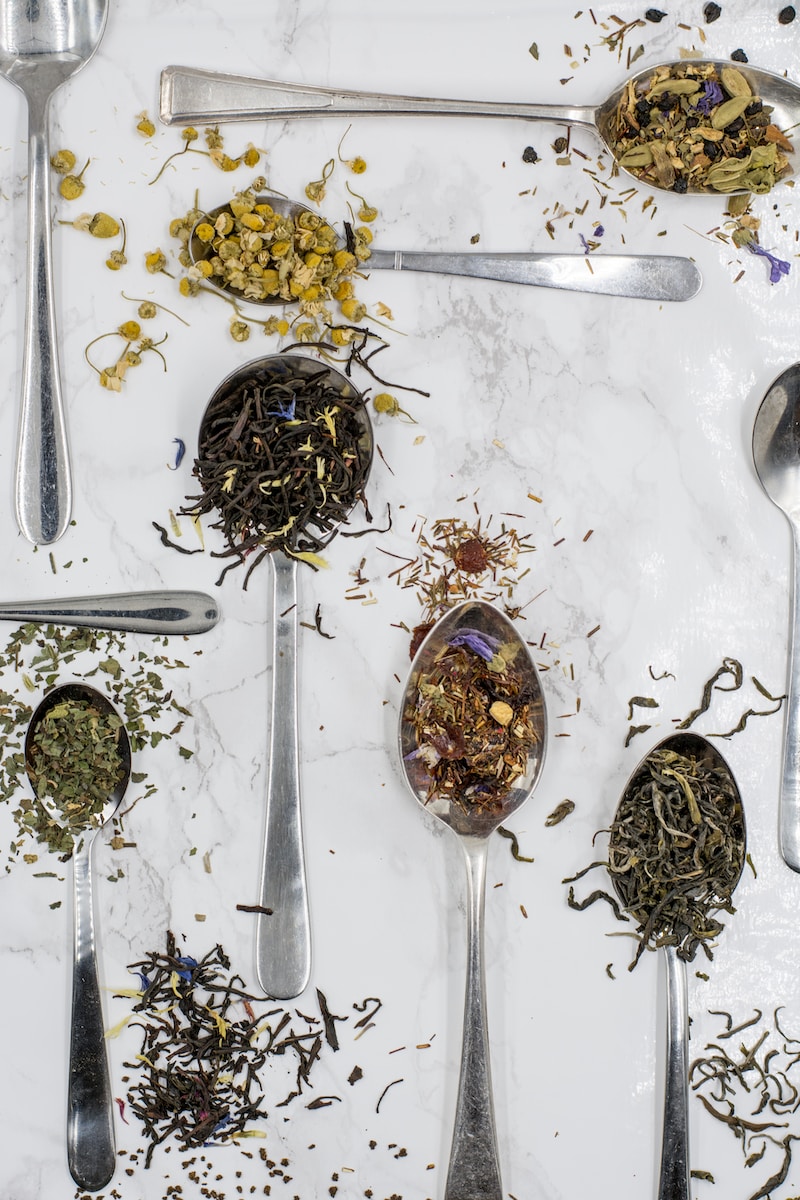Did you realize that ground turmeric powder has been utilized for centuries in traditional medicine and cooking? It’s more than just a current trend; it comes with numerous health benefits! Research has shown that turmeric is rich in antioxidants and anti-inflammatory properties that can enhance digestion, strengthen immunity, and decrease the chances of developing chronic diseases such as heart disease and cancer.
With all these incredible benefits, it’s no wonder that turmeric has become a staple in kitchens around the world. But how do you use ground turmeric powder in your daily cooking? In this article, I will share nine creative ways to incorporate this golden spice into your favorite recipes. From adding a twist to your morning smoothie to creating vibrant curry dishes and homemade face masks, there are endless possibilities to explore.
So grab your spice jar and get ready to elevate your culinary creations with the power of turmeric!
Key Takeaways
- Ground turmeric powder can be added to morning smoothies for a refreshing twist and added health benefits.
- It can be added to rice and grains for a vibrant twist and beautiful color, creating dishes like golden rice.
- Turmeric is a key ingredient in curry dishes, such as classic Indian curry, Thai-inspired curry, and creamy coconut curry.
- Turmeric can be used in sauces, dressings, soups, and stews to add vibrant color, flavor, and provide anti-inflammatory properties.
Add a Twist to Your Morning Smoothie
Want to spice up your morning routine? Just add a teaspoon of ground turmeric powder to your favorite smoothie for a refreshing twist that’ll kickstart your day!
Turmeric is a vibrant yellow spice that’s been used in traditional medicine for centuries due to its powerful anti-inflammatory properties. By incorporating it into your smoothie, you not only add a unique flavor but also benefit from its health-promoting properties.
To create a twist on traditional smoothie flavors, experiment with different turmeric and fruit combinations. For a tropical twist, blend together a ripe banana, a cup of pineapple chunks, a handful of spinach, a teaspoon of ground turmeric, and a splash of coconut milk. The sweetness of the fruit balances out the earthy taste of turmeric, resulting in a delicious and nutritious smoothie.
The combination of turmeric and fruit not only adds flavor but also provides a wide array of nutrients. Turmeric is rich in curcumin, a compound with powerful antioxidant and anti-inflammatory effects. Additionally, fruits are packed with essential vitamins, minerals, and fiber, making this smoothie a great way to start your day on a healthy note.
Now that you’ve learned how to add a twist to your morning smoothie, let’s move on to the next section and explore how you can spice up your rice and grains.
Spice Up Your Rice and Grains
I love to spice up my rice and grains by incorporating ground turmeric powder. One of my favorite ways to do this is by creating golden rice. I simply add a teaspoon of ground turmeric powder to the cooking water before adding the rice, and it gives the rice a beautiful golden color and a subtle earthy flavor.
Additionally, I enjoy adding ground turmeric powder to quinoa and couscous dishes to give them a flavorful and vibrant twist.
Create Golden Rice
To create Golden Rice, start by combining ground turmeric powder with cooked white rice and gently mixing them together. Turmeric is a spice commonly used in Indian cooking and is known for its vibrant yellow color and earthy flavor. In addition to adding a beautiful hue to your rice, turmeric also offers numerous health benefits. It contains a compound called curcumin, which has powerful anti-inflammatory and antioxidant properties. Curcumin has been linked to reduced inflammation, improved brain function, and a lower risk of chronic diseases. By incorporating turmeric into your cooking, like in this Golden Rice recipe, you can easily boost the nutrition profile of your meal. Now, let’s move on to the next section and explore how to spice up your rice and grains with flavorful quinoa and couscous.
Flavorful Quinoa and Couscous
Let’s dive into the world of flavorful quinoa and couscous, adding a delightful twist to our rice and grains! If you’re looking to elevate your meals with a healthy and vibrant touch, these flavorful quinoa recipes and couscous with turmeric are perfect choices. Here are four reasons why you should give them a try:
-
Bursting with antioxidants: Quinoa and couscous are already packed with nutrients, and adding turmeric to them increases their antioxidant content, providing a boost to your immune system.
-
Anti-inflammatory properties: Turmeric contains curcumin, a compound known for its anti-inflammatory properties. Incorporating it into your quinoa and couscous dishes can help reduce inflammation in the body.
-
Vibrant color: The addition of ground turmeric powder gives a beautiful golden color to your quinoa and couscous, making them visually appealing and enticing.
-
Earthy flavor: Turmeric adds a warm and earthy flavor to these grains, enhancing their taste and bringing a delightful twist to your meals.
By incorporating turmeric into your quinoa and couscous recipes, you can create delicious and nutritious dishes that’ll leave you satisfied.
Now, let’s move on to discovering how to create delicious curry dishes.
Create Delicious Curry Dishes
When it comes to creating delicious curry dishes, there are three key points to consider: classic Indian curry, Thai-inspired curry, and creamy coconut curry.
Classic Indian curry is known for its rich and complex flavors, often made with a combination of spices such as turmeric, cumin, and coriander.
Thai-inspired curry, on the other hand, is famous for its vibrant and spicy flavors, often made with ingredients like lemongrass, Thai basil, and red curry paste.
Lastly, creamy coconut curry offers a creamy and indulgent twist, with the addition of coconut milk and ingredients like ginger, garlic, and lime.
Classic Indian Curry
Start by sautéing onions and garlic in a pan with some oil, then add ground turmeric powder to create a vibrant and aromatic base for your classic Indian curry.
The combination of the sautéed onions, garlic, and turmeric creates a flavorful foundation that will enhance the taste of any curry dish.
For a spicy tomato curry, add diced tomatoes, red chili powder, and other spices like cumin and coriander.
Let the flavors meld together as the curry simmers on low heat.
If you prefer a creamy paneer curry, stir in some yogurt or coconut milk towards the end of cooking to add richness and depth.
The turmeric not only adds a beautiful golden color to the curry but also imparts its earthy and slightly bitter flavor.
Now, let’s move on to exploring a Thai-inspired curry.
Thai-inspired Curry
In our previous subtopic, we explored the rich flavors of Classic Indian Curry. Now, let’s venture into the realm of Thai-inspired Curry, where the aromatic flavors of Southeast Asia take center stage. Thai cuisine is known for its vibrant and bold flavors, and turmeric is a key ingredient in many Thai dishes. Not only does turmeric add a beautiful golden hue to the curry, but it also offers numerous health benefits. It is rich in antioxidants and has anti-inflammatory properties. To create a delicious Thai-inspired curry, combine turmeric powder with other fragrant spices such as cumin, coriander, and ginger. Add it to a base of coconut milk, vegetables, and your choice of protein for a wholesome and flavorful meal. Now, let’s move on to the next section and discover the wonders of creamy coconut curry.
Creamy Coconut Curry
Indulge in the velvety richness of creamy coconut curry, where the luscious blend of coconut milk and fragrant spices will transport your taste buds to a tropical paradise.
When it comes to spicy curry variations, the addition of ground turmeric powder in the curry paste is a game-changer. Not only does it give the curry a vibrant yellow color, but it also adds a subtle earthy flavor that complements the creaminess of the coconut milk.
Turmeric is known for its anti-inflammatory properties and health benefits, making it a great addition to any curry dish. By incorporating ground turmeric powder into your creamy coconut curry, you not only enhance the flavor but also boost its nutritional value.
So, get ready to make vibrant sauces and dressings that will take your culinary creations to the next level.
Make Vibrant Sauces and Dressings
Enhance your sauces and dressings with a touch of ground turmeric powder, adding a burst of vibrant color and a hint of exotic flavor. Turmeric can elevate your dishes by infusing them with its unique taste and providing a beautiful golden hue.
One way to incorporate turmeric into your dressings is by creating a turmeric-infused salad dressing. Simply whisk together olive oil, lemon juice, honey, Dijon mustard, and a pinch of ground turmeric. This dressing not only adds a pop of color to your salads but also offers the health benefits of turmeric, such as its anti-inflammatory properties.
Another way to use ground turmeric is by incorporating it into turmeric-spiced marinades. Combine yogurt, minced garlic, ginger, ground cumin, ground coriander, and turmeric to create a flavorful marinade for meat, poultry, or vegetables. The turmeric adds a warm, earthy flavor that complements a wide range of ingredients.
Now that your sauces and dressings are bursting with color and flavor, let’s transition to the next section about brewing a soothing turmeric tea.
Brew a Soothing Turmeric Tea
Get ready to savor a comforting cup of turmeric tea that’ll warm your soul and invigorate your senses. Turmeric tea isn’t just delicious but also packed with numerous health benefits.
Here are some benefits of turmeric tea:
-
Boosts immunity: Turmeric contains curcumin, a compound known for its immune-boosting properties. Drinking turmeric tea regularly can help strengthen your immune system and protect you from common illnesses.
-
Reduces inflammation: Curcumin’s also a potent anti-inflammatory agent. Consuming turmeric tea can help alleviate chronic inflammation in the body, which is often associated with various diseases.
-
Aids digestion: Turmeric tea’s been used for centuries to promote digestion. It can help relieve bloating, indigestion, and other gastrointestinal issues.
-
Supports heart health: Studies have shown that curcumin in turmeric may help improve heart health by reducing cholesterol levels and preventing blood clot formation.
-
Promotes relaxation: Turmeric tea has a calming effect on the body and can help reduce stress and anxiety.
Now that you know the amazing benefits of turmeric tea, you might be wondering when’s the best time to drink it. Many people prefer to enjoy a cup of turmeric tea in the morning to kickstart their day or in the evening to unwind and relax.
In the next section, I’ll share how you can incorporate turmeric into baked goods to add a healthy twist to your favorite treats.
Incorporate Turmeric into Baked Goods
Transform your favorite baked treats into healthy delights by infusing them with the vibrant and aromatic essence of golden turmeric. Adding turmeric powder to your baked goods not only adds a beautiful golden hue, but also brings a unique flavor profile and a host of health benefits.
To start, try making turmeric-infused cookies. Simply mix turmeric powder into your cookie dough, along with other traditional ingredients like flour, sugar, and butter. The turmeric adds a subtle earthiness and warmth to the cookies, making them a perfect treat for any time of the day.
Another delicious option is turmeric spiced bread. Add a teaspoon or two of turmeric powder to your bread dough, along with cinnamon, nutmeg, and other spices of your choice. This will give your bread a beautiful golden color and a rich, aromatic flavor. The combination of spices and turmeric creates a warm and comforting taste that pairs perfectly with a cup of tea or coffee.
Incorporating turmeric into your baked goods not only adds flavor, but also provides numerous health benefits. Turmeric is known for its anti-inflammatory properties and is rich in antioxidants. It’s also been shown to improve brain function and promote heart health.
Now that you’ve learned how to incorporate turmeric into your baked goods, let’s move on to the next section and discover how to enhance your soups and stews with this wonderful spice.
Enhance Your Soups and Stews
When it comes to enhancing soups and stews, I’ve found that adding turmeric can really take the flavors to the next level. One of my favorite recipes is a hearty vegetable soup, where I sprinkle in some ground turmeric to give it a warm and earthy taste.
Not only does it add depth to the overall flavor, but it also provides numerous health benefits due to its anti-inflammatory properties.
Another dish I love to make is a flavorful lentil stew, and turmeric plays a crucial role in elevating the taste. The vibrant yellow hue and distinct flavor of turmeric really complement the earthy lentils, creating a delicious and nutritious meal.
Hearty Vegetable Soup
Add a touch of ground turmeric powder to this delicious Hearty Vegetable Soup for an extra boost of flavor and a vibrant yellow hue. Turmeric has a warm, earthy flavor that pairs perfectly with the roasted vegetables in this soup. The combination of turmeric and roasted vegetables creates a rich and savory taste that will delight your taste buds.
Additionally, turmeric has been shown to have anti-inflammatory properties and may help boost your immune system. For added health benefits, try making a turmeric-infused salad dressing to drizzle over your soup. The combination of turmeric and fresh vegetables will provide a nutritious and satisfying meal.
Now, let’s move on to the next section and discover how to make a flavorful lentil stew.
Flavorful Lentil Stew
To make this flavor-packed Lentil Stew, all you need is a hearty blend of lentils, aromatic spices, and a simmering pot.
First, sauté onions and garlic in a large pot until they turn golden brown, releasing their sweet aroma. Then, add in diced carrots, celery, and bell peppers, allowing the flavors to meld together.
Next, sprinkle in ground turmeric powder, cumin, and paprika, giving the stew its vibrant color and rich taste. The lentils are then added, along with vegetable broth, allowing them to cook until tender and creamy.
Finally, garnish with fresh cilantro and a squeeze of lemon juice for a burst of freshness. This flavorful lentil stew is just one of the many delicious lentil soup variations you can explore.
Now, let’s move on to how you can boost your smoothie bowls.
Boost Your Smoothie Bowls
Enhance your smoothie bowls with a sprinkle of ground turmeric powder for a vibrant and nutritious boost. Turmeric is not only a flavorful spice, but it also offers numerous health benefits when incorporated into smoothies. The bright yellow color of turmeric comes from its active compound, curcumin, which is known for its powerful anti-inflammatory and antioxidant properties. By adding turmeric to your smoothie bowls, you can give your body a natural boost of vitamins, minerals, and antioxidants.
To give you some inspiration, here are three delicious turmeric smoothie recipes to try:
| Recipe | Ingredients |
|---|---|
| Golden Mango Smoothie | 1 cup mango, 1 banana, 1 cup almond milk, 1/2 teaspoon ground turmeric |
| Tropical Turmeric Smoothie | 1 cup pineapple, 1/2 cup coconut milk, 1/2 cup spinach, 1/2 teaspoon ground turmeric, 1 tablespoon chia seeds |
| Berry Turmeric Smoothie | 1 cup mixed berries, 1/2 cup Greek yogurt, 1 cup almond milk, 1/2 teaspoon ground turmeric, 1 tablespoon honey |
Not only do these smoothies taste great, but they also provide a range of health benefits. Turmeric has been linked to improved digestion, reduced inflammation, and boosted immune function. Incorporating turmeric into your smoothie bowls is a simple way to enhance their nutritional value and support your overall well-being.
Now that you know how to boost your smoothie bowls with turmeric, let’s move on to the next topic: creating homemade face masks and scrubs.
Create Homemade Face Masks and Scrubs
Now that we’ve covered boosting your smoothie bowls, let’s dive into the world of DIY face masks and scrubs that’ll leave your skin feeling refreshed and rejuvenated.
Making homemade face masks and scrubs isn’t just a fun and creative way to pamper yourself, but it also lets you control the ingredients that go onto your skin. Here are three simple and effective recipes that harness the power of natural ingredients:
-
Turmeric and Honey Face Mask: Mix 1 teaspoon of ground turmeric powder with 1 tablespoon of raw honey. Apply the mixture to your face and leave it on for 10-15 minutes before rinsing off. Turmeric has anti-inflammatory properties that can help reduce redness and inflammation, while honey acts as a natural moisturizer.
-
Oatmeal and Yogurt Scrub: Combine 2 tablespoons of ground oats with 1 tablespoon of plain yogurt. Gently massage the mixture onto your face in circular motions, then rinse off with warm water. Oats are a gentle exfoliant that can remove dead skin cells, while yogurt helps to brighten and hydrate the skin.
-
Avocado and Lemon Face Mask: Mash half of a ripe avocado and mix it with the juice of half a lemon. Apply the mixture to your face and leave it on for 15-20 minutes before rinsing off. Avocado is rich in healthy fats that can nourish and moisturize the skin, while lemon helps to brighten and tone.
Now that you’ve learned how to create homemade face masks and scrubs, it’s time to experiment with turmeric in other recipes.
Experiment with Turmeric in Other Recipes
I love experimenting with turmeric in different recipes, and two of my favorites are turmeric latte and turmeric-infused oatmeal.
Turmeric latte, also known as golden milk, is a warm and comforting drink made with turmeric, milk, and spices like cinnamon and ginger. It’s not only delicious but also packed with anti-inflammatory properties.
Another great way to incorporate turmeric into your diet is by adding it to your oatmeal. Simply sprinkle some ground turmeric powder into your cooked oats, along with other toppings like nuts and fruits, for a vibrant and nutritious breakfast option.
Turmeric Latte
To make a delicious Turmeric Latte, start by combining ground turmeric powder with warm milk and a touch of honey for a soothing and flavorful experience. Turmeric latte, also known as golden milk, has gained popularity due to its potential health benefits.
Turmeric contains curcumin, a compound known for its anti-inflammatory and antioxidant properties. The warm milk helps to enhance the absorption of curcumin in the body. To make the latte, simply heat the milk and whisk in the turmeric powder and honey until well combined. You can also add a pinch of cinnamon or ginger for extra flavor.
The result is a vibrant yellow drink that is not only delicious but also packed with potential health benefits.
Now, let’s move on to the next section about turmeric-infused oatmeal.
Turmeric-infused Oatmeal
Turmeric-infused oatmeal is a popular breakfast choice, and it’s no wonder – studies have shown that adding turmeric to your morning meal can increase antioxidant levels in the body by up to 300%.
Here are three delicious ways to enjoy this nutritious and flavorful dish:
-
Turmeric-infused pancakes: Start your day with a stack of golden, fluffy pancakes infused with the warm and earthy flavors of turmeric. Simply mix ground turmeric powder into your pancake batter and cook until golden brown. Top with your favorite fruits and a drizzle of maple syrup for a satisfying breakfast treat.
-
Turmeric spiced granola: Add a sprinkle of ground turmeric powder to your homemade granola mix before baking. The turmeric adds a subtle warmth and vibrant color to the crunchy oats, nuts, and dried fruits. Enjoy it with yogurt or milk for a nutritious and filling breakfast or snack option.
-
Turmeric-infused oatmeal cookies: Take your oatmeal cookies to the next level by incorporating ground turmeric powder into the dough. The turmeric not only adds a beautiful golden hue but also imparts a unique flavor profile to the cookies. Enjoy them as a wholesome snack or a sweet treat any time of the day.
Incorporating turmeric into your breakfast not only adds a burst of flavor but also provides numerous health benefits. So, give these turmeric-infused recipes a try and start your day on a healthy and delicious note.
Frequently Asked Questions
What are the health benefits of turmeric powder?
The health benefits of turmeric powder are numerous. It’s been used in skincare for its anti-inflammatory and antioxidant properties. DIY recipes with turmeric powder can help reduce acne, lighten dark spots, and improve overall skin tone.
In traditional medicine, turmeric has been used for centuries to treat various ailments. Research suggests it may help with conditions like arthritis, heart disease, and even cancer. However, more studies are needed to fully understand its effectiveness.
Can turmeric powder be used as a natural food coloring?
Yes, turmeric powder can be used as a natural food coloring. Its vibrant yellow color adds a beautiful hue to dishes like curries, rice, and sauces. Additionally, it can be used in various recipes such as smoothies, baked goods, and even beverages.
Apart from its culinary uses, turmeric powder is also beneficial for skincare. It’s known for its anti-inflammatory properties and can be used in face masks, scrubs, and creams to promote healthy and glowing skin.
How can I store turmeric powder to maintain its freshness?
To maintain the freshness of turmeric powder, proper storage is essential. Store it in an airtight container in a cool, dark place, away from heat and sunlight. This will help preserve its color, flavor, and nutritional benefits. Additionally, make sure to keep it away from moisture, as it can cause clumping and spoilage.
By following these storage guidelines, you can ensure that your turmeric powder remains fresh and potent for a longer period of time.
Can I use ground turmeric powder as a substitute for fresh turmeric root in recipes?
Absolutely! Ground turmeric powder can be a great substitute for fresh turmeric root in recipes. In Indian cuisine, it’s a staple ingredient, adding a vibrant yellow color and a warm, earthy flavor to dishes like curries and rice. It can also be used in smoothies for its health benefits, as it contains curcumin, a compound with antioxidant and anti-inflammatory properties. So go ahead and sprinkle some ground turmeric powder for a burst of flavor and color in your cooking!
Are there any potential side effects or precautions to consider when using turmeric powder?
There are potential interactions between turmeric powder and certain medications, so it’s important to exercise caution. Turmeric powder contains a compound called curcumin, which can interfere with the effectiveness of blood-thinning medications like warfarin.
Additionally, high doses of turmeric powder may cause stomach upset and indigestion. The recommended dosage for turmeric powder is 1-3 grams per day. It’s always best to consult with a healthcare professional before incorporating turmeric powder into your routine, especially if you’re taking any medications.
Conclusion
In conclusion, using ground turmeric powder in your daily cooking is a game-changer. It’s vibrant color and unique flavor can transform any dish into a culinary masterpiece. From adding it to your morning smoothie for an energizing boost, to creating delicious curry dishes that’ll transport your taste buds to exotic lands, there are endless possibilities.
Not to mention, the numerous health benefits of turmeric are truly remarkable. So go ahead, sprinkle some magic in your kitchen and let the golden spice work its wonders. You won’t be disappointed!










